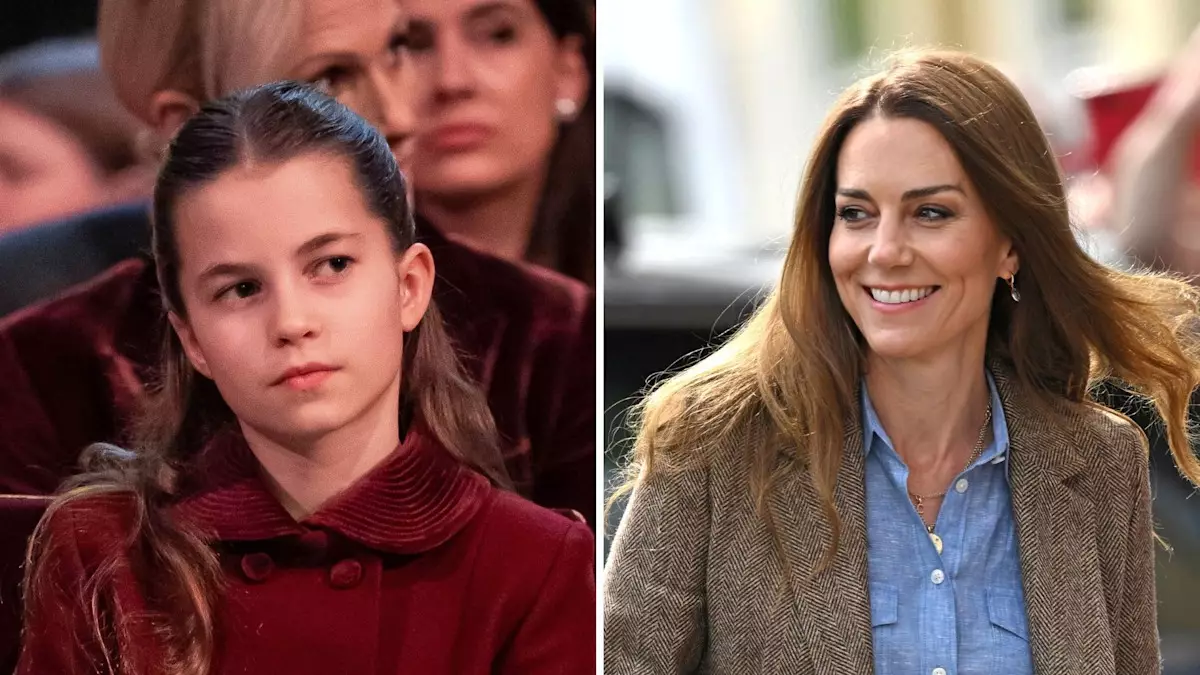Despite being just 10 years old, Princess Charlotte of Wales is poised to become a formidable force in the realm of fashion and royal representation. Much like her mother, Catherine, Princess of Wales, Charlotte is gradually carving out her own niche as a budding style icon. While royal obligations often overshadow personal expression, Charlotte’s early choices in jewelry demonstrate a sophisticated understanding of what it means to blend nostalgia, family heritage, and contemporary flair. The impressions she leaves at various regal events not only speak to her developing taste but also highlight a conscious effort to link her identity to royal tradition.
The Art of Sentimental Jewelry
Jewelry has long played a pivotal role in royal families, often serving as symbols of status as well as personal stories. Princess Charlotte’s selection is noteworthy for its richness in sentiment, showcasing a collection that, while valuable, also carries deep-rooted meanings. For example, her bespoke tiara crafted by Alexander McQueen, estimated to be worth around £80,000, marked her debut into the royal spotlight during King Charles III’s coronation. This piece is significant not only for its price tag but also due to its designer’s link to her mother, amplifying the familial bond that resonates through generations.
Maxwell Stone, a diamond expert, posits that Charlotte’s jewelry choices reveal a maturing sensibility toward style that combines personal touches with royal expectations. Such deliberate selections indicate that she’s not simply following in her mother’s footsteps but is instead establishing her own royal fashion narrative—a blend of youthful innocence with a sophisticated understanding of royal duties.
Connecting Generations Through Heirloom Pieces
One of the most touching moments in Princess Charlotte’s public appearances came during her great-grandmother Queen Elizabeth II’s state funeral, where she wore a diamond horseshoe brooch valued at around £10,000. This piece, once belonging to Queen Elizabeth, the Queen Mother, serves as a poignant tribute to her great-grandmother’s enduring love for horses—a passion that resonates within the royal family, extending down to Princess Anne and her Olympic daughter, Zara Tindall. The brooch is not just an accessory; it’s a lineage artifact, symbolizing the transition of royal values through jewelry.
Such heirlooms underscore the royal family’s dedication to maintaining their history while allowing new generations to forge their paths. As Princess Charlotte adorns herself with pieces rich in history, she becomes a custodian of legacy, shaping a narrative that honors her family’s storied past while simultaneously adding her chapter.
Affordability Meets Royal Elegance
Interestingly, while some of Princess Charlotte’s jewelry is highly valuable, other pieces highlight a blend of royal elegance and accessibility. For instance, a pearl bracelet priced at just £2,000 echoes motifs from late Queen Elizabeth’s renowned style, while a £100 gold bracelet inscribed with her name in Arabic and featuring a nazar charm adds a modern twist to her collection. Each piece, regardless of its market value, serves as a personal emblem representing both tradition and a fresh viewpoint.
Charlotte’s choices mirror a broader trend within the royal family, where jewelry transcends mere adornment to become instruments of storytelling. Just as her aunt Meghan Markle often showcases jewelry that embodies personal significance, Charlotte’s selection demonstrates that even at a young age, she appreciates the narratives woven into each accessory.
The Influence of Family Bonds
Princess Charlotte’s jewelry does more than punctuate her outfits; it symbolizes the intricate, interwoven relationships within her family. The ruby necklace she wore during Christmas, which was designed by Prince Harry’s ex-girlfriend Chelsy Davy, underscores a connection to her uncle’s past. Through such choices, Charlotte demonstrates how royal fashion can both pay homage to family and forge new narratives, bridging old ties while welcoming new influences.
As she transitions through childhood into adolescence, the depiction of Princess Charlotte evolves into a synthesis of the historic and the modern—a reflection of a young girl learning from a legacy while carving out her identity. Through her remarkable choices, Charlotte not only celebrates her heritage but also redefines what it means to be a royal style icon in the contemporary world. The blend of tradition with personal expression promises a bright, fashionable future for the young princess.

